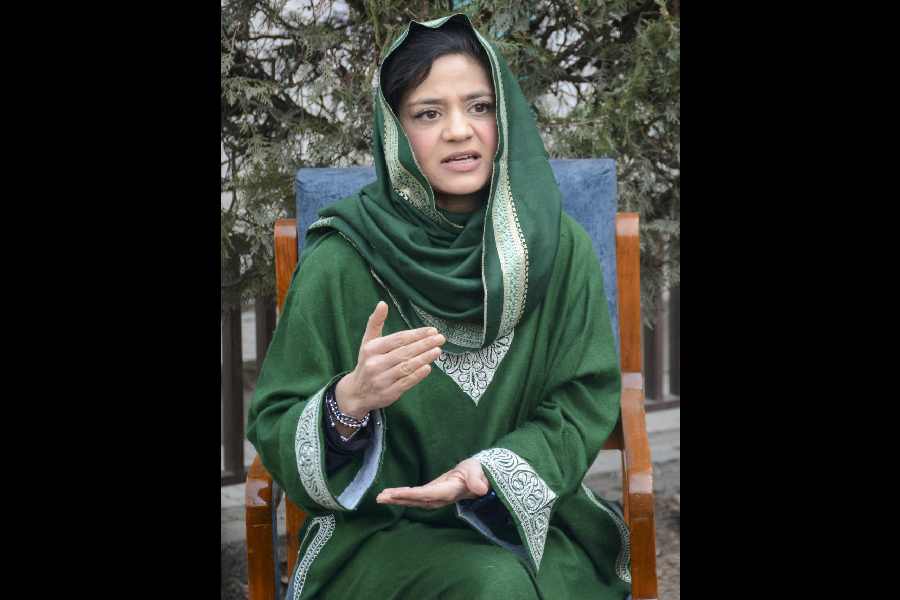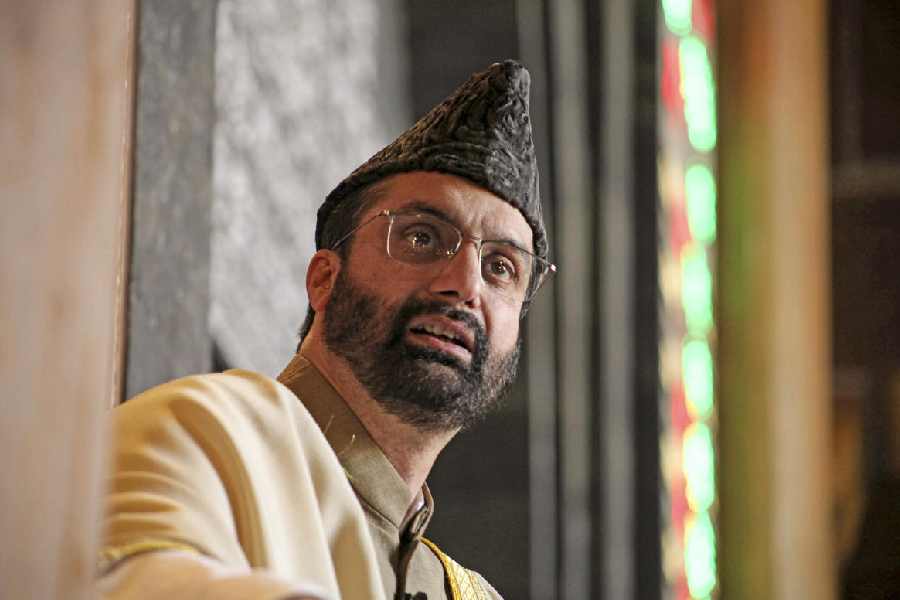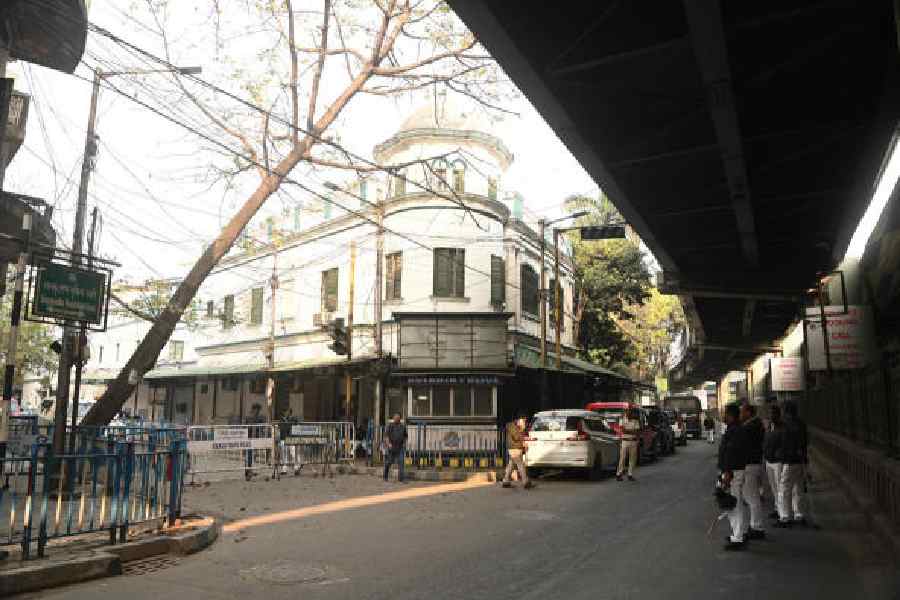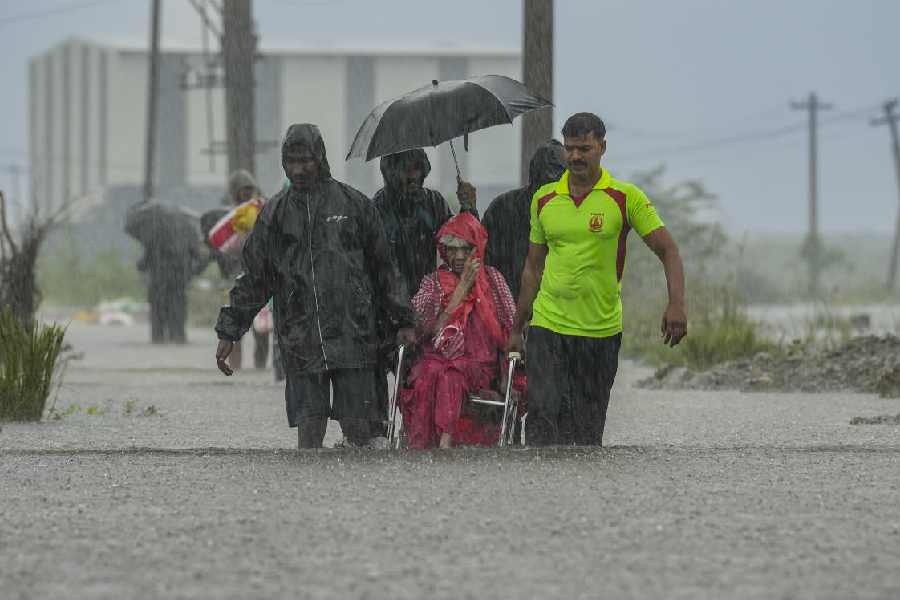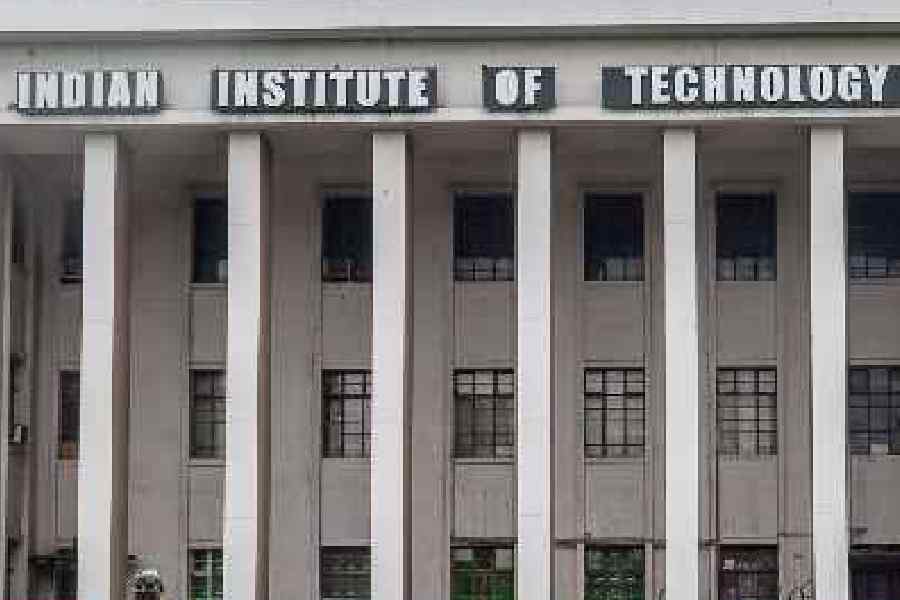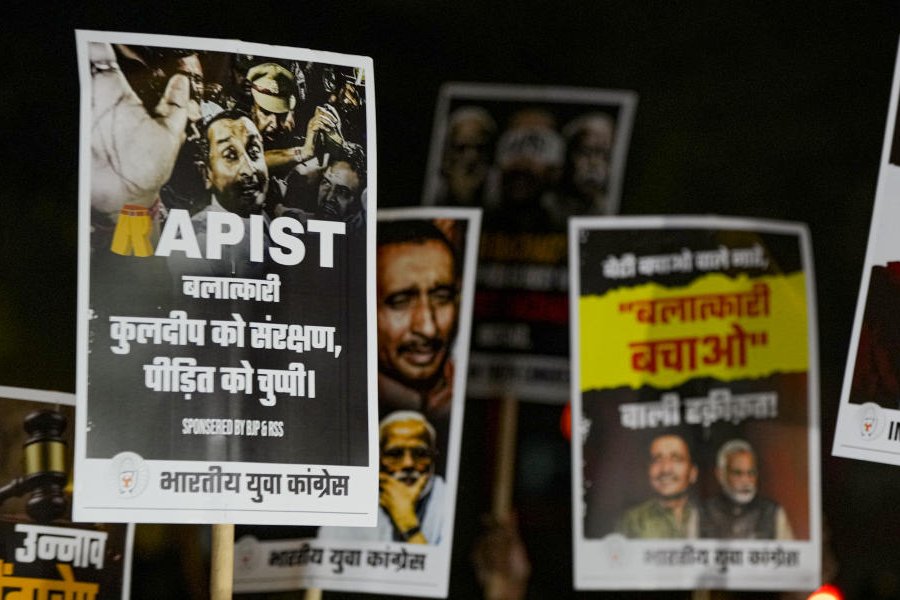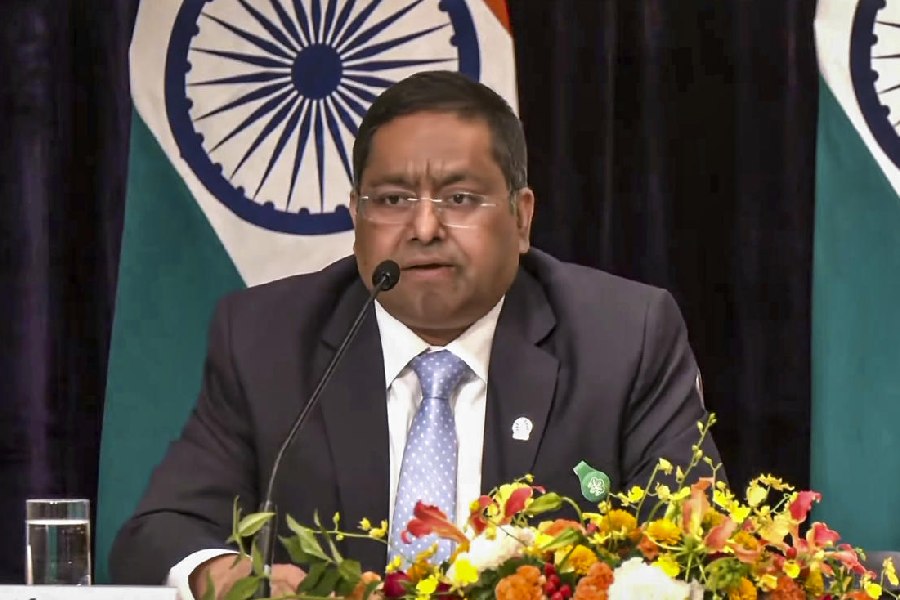 |
| Aditya Poddar (third from left), who has donated the money, in front of the Bristol tomb. Telegraph picture |
Bristol, June 13: That there’s some corner of a foreign cemetery that is forever Bengal is thanks to the generosity of Aditya Poddar, a Calcutta-born and bred businessman who handed over a $100,000 cheque in Arnos Vale cemetery in Bristol yesterday to prevent Raja Ram Mohun Roy’s dilapidated tomb from collapsing.
“It is a very proud heritage that we have — I want to contribute to that,” said Poddar, 39, who studied at St Xavier’s College, Calcutta, after having a broad and secular vision of India ingrained in him at the Scindia School in Gwalior.
Now chairman of a timber company, Wellside International, based in Singapore and with concessions in many Latin American countries, including Panama, Costa Rica and El Salvador, Poddar explained his philosophy — and his sentiments which he said had been echoed in Mira Nair’s film, The Namesake.
“Our roots are very important to us,” he said. “We relate to where we come from. Heritage is very, very important. As a businessman, you don’t want only to make money, you want to contribute back to society because that is where you are making your money.”
He readily agreed to donate the entire sum required for renovation work after being approached last year by the mayor of Calcutta, Bikash Ranjan Bhattacharyya, and the municipal commissioner, Alapan Bandyopadhyay, who had visited Arnos Vale cemetery in the company of Rajat Bagchi, minister (coordination) at the Indian high commission in London.
“It is an Indian looking monument,” observed Poddar.
Although Ram Mohun Roy was one of the foremost social reformers of India, his story — why he set up the Brahmo Samaj, how he fought against the practice of sati and undertook a trip to England in 1831 to ensure that Lord Bentick’s law abolishing the burning of widows was not reversed by the Hindu men who had hired an English lawyer for that purpose — is almost completely unknown to most Indians in Britain and perhaps a significant section of the diaspora.
The man considered to be “the Father of the Bengal Renaissance” was born, not in 1774, as the inscription on his tomb says, but on May 22, 1772, in Radhanagore, Bengal, the author Krishna Dutta, who was present yesterday, pointed out.
“He was also not a Bahadur (as the inscription also claims),” she said.
In 1833, during his visit to England, Ram Mohun Roy accepted an invitation from Lant Carpenter, a sympathetic minister in the Unitarian Church, to stay at his home, Beech House, Stapleton Grove, in Bristol. But the Raja contracted meningitis and died 10 days after arriving on September 27, 1833.
He was initially buried in the grounds of Beech House in accordance with his own wishes but his remains were reinterred a decade later in Arnos Vale cemetery where the tomb was funded by his friend and a co-founder of the Brahmo Samaj, Dwarkanath Tagore.
Yesterday, Poddar handed over his cheque to a local amateur historian, Carla Contractor — she is married to a Parsi, Phiroze Contractor — who has long campaigned for the restoration of some of the tombs in Arnos Vale, including notably that of Ram Mohun Roy.
“I had been trying in vain for a long time but out of the blue, the mayor of Calcutta arrived and offered to find the money to restore the tomb because the Raja is such an important hero in West Bengal,” commented Carla, who is a member of the Raja Ram Mohun Roy Trust given responsibility for the restoration work by the Indian high commission in London.
Carla also accepted a £500 cheque from the Brahmo Sammilan Samaj in Calcutta handed over by Rita Bhimani, who had come accompanied by her cricket writer husband, Kishore Bhimani.
The tomb, began Carla, “needs a lot of restoration. The foundations are sinking, the pillars have got cracks down them because they are in sandstone, the canopy is leaking. Basically, the whole thing needs to be taken down, cleaned, solidified and reassembled. It is a major job but it will be done”.
She promised: “When this is done, it will look as it did in 1842. It was William Princep from Calcutta who designed this tomb and I am in touch with the Princep family.”
She described the tomb as “a site of pilgrimage. Whenever I come here (I find) somebody has left flowers, a little memento, something touching. It is a source of pride for the Indian community — and my husband is Indian”.
Prayers remembering Ram Mohun Roy as well as Lant’s daughter, Mary Carpenter, who nursed the Raja and later visited India four times to do social work, were led by Bernard Omar, president of the Unitarian Church in Bristol.
“Across our different faiths we unite in gratitude to the lives of two great people, one of whom came from India to this country and one, Mary Carpenter, who travelled to India,” he said. “Both are buried in this cemetery. We pray in our different ways that they may continue to be remembered and honoured — that the essence of their work may continue. Amen.”
Richard Smith, chairman of the Arnos Vale Cemetery Trust, told his Indian guests: “There are somewhere in the region of 50,000 graves and round about 170,000 people buried here. There used to be a crematorium here and over 120,000 people were cremated here as well. This cemetery was set up in 1837 and the first burial was actually in 1839. The crematorium, the first one in the west country, did not start until 1928.”
The repair and renovation work will be undertaken to the highest standards under the guidance and watchful eyes of both English Heritage and Bristol City Council.
Philip Davies, planning development director for the south of England at English Heritage, declared: “The monument is of very considerable interest and importance in England. It is one of the highest grades of listed buildings for a historical monument in England — Grade Two Star. It is something we are very keen to celebrate and the role of English Heritage here is provide advice and guidance and to make sure that the restoration and repair work is carried out to the best possible standards and does justice to the monument of such an important man.”
He, too, confirmed: “It is vulnerable, in need of repair and restoration. It is partly the age and vulnerability of the materials that were used originally. This is a very, very important step in conserving a very important monument in England.”
He also said: “It is particularly appropriate to do this in the 60th year of Indian independence. Britain and India have enjoyed a special relationship for 300 years and it is very important that we continue to celebrate this and develop that relationship with tangible projects like the restoration of this monument.”
Yesterday, the sun glittered on the gold chains of office worn by The Rt Hon. The Lord Mayor of the City and the County of Bristol, Royston Alan Griffey.
He disclosed that the previous private owner had wanted to sell the cemetery to private developers who had intended either to bulldoze or relocate the memorials and use the land to build residential property.
Griffey said: “This cemetery was in private ownership and the last 20 years or so it was in terrible condition. The previous private owner was not looking after it so the city (council) had to start compulsory purchase proceedings. That took quite a long time to do).”
He went on: “That was successful and the compulsory purchase order has fairly recently been confirmed. The ownership was transferred (for a nominal £1) from a private company to Bristol City Council who then, in turn, transferred it to some trustees to look after the restoration of this beautiful cemetery, including the Raja’s tomb.”
He insisted: “Without the city taking back the cemetery I am afraid it would have been in a very, very badly neglected state and it would have eventually deteriorated and a lot of the monuments, including this tomb, would have collapsed.”
He also believed the Raja’s message had contemporary relevance. “I certainly do — the Raja has the benefit of not one but two statues in Bristol. There is one outside the Bristol Council offices, a full-length statue, very imposing in robes, but inside the Council House is also a smaller statue, a bust of the Raja. And Bristol is interested in India because there is a large Indian population in the city.”
He commented: “Of course, he was a great man, benefactor, linguist, ahead of his time with human rights. I am a lawyer so I know how difficult battles can be to achieve civil liberties and human rights.”
He was frank about Bristol’s dark past, in every way as shameful as sati. “This is the 200th anniversary of the abolition of the slave trade act passed in 1807 and we have been having commemorations in Bristol and other places — Liverpool, London, Hull — who were also ports involved with the slave trade. Bristol was one of the major trading posts in the triangular trade — ships from Bristol went to west Africa and then over to the Caribbean and North America and then back to Bristol with tobacco and other products.”
Alapan Bandyopadhyay, the Calcutta’s municipal commissioner, paid tribute to the dedication shown by Carla.
“Carla had taught at Sophiya College in Bombay — and she rediscovered Raja Ram Mohun Roy. She rightly thinks mere restoration is not enough unless the memory is kept alive. The trust could repair other conservation projects. The cause could be made wider.”


